Grevillea – Of Boldness, Strength and Courage
Grevilleas are diverse, with about 340 species native mainly to Australia but some can also be found in New Guinea, New Caledonia, Indonesia, and Sulawesi. They come in all shapes and sizes from small ground-cover shrubs less than 50 cm in height to tall trees up to 35 m.
They are named in honour of Charles Francis Greville (1749 – 1809) a British antiquarian, collector and politician, who was a passionate gardener and a close friend of botanist Sir Joseph Banks.
Grevilleas distinctive colourful flower clusters come in three basic forms
Toothbrush-like
spider-like
and large brushes.
Grevilleas are mentioned in Tim Low’s field guide ‘Wild Food Plants of Australia’ as a food source with the flowers producing a sweet nectar. Flowers of Golden Grevillea Grevillea pteridifolia common in tropical woodlands of northern Australia, for example, are rich in Vitamin C while Silky Oak Grevillea robusta (see photo above) is one of the best nectar producers.
The sweet nectar of Grevilleas attract insects, birds and marsupials and the flower heads of some species have been used by Aborigines as food source who, for example, soaked them in water to make a sweet drink. (Please note that some of the cultivated species of Grevillea contain toxic cyanide.)
Flower essences of two native Grevilleas can be found in the Australian Bush Flower Essence range with Red Grevillea Grevillea speciosa and Grey Spider Flower Grevillea buxifolia.
Red Grevillea’s Grevillea speciosa healing potential is to support someone feeling stuck in their lives or for people who are oversensitive, are easily affected by criticism and by unpleasant people. They are often too reliant on others.
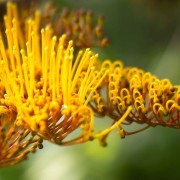 Just before coming into full bloom Grevilleas (pictured Silky Oak Grevillea robusta) flower stamens are curled in, symbolizing a contraction, something that can be experienced when being stuck in life. Life is circling in on itself as we don’t know which step to take next, being indecisive of the direction to take, or we have a direction set too rigidly in our minds but whatever we are trying to do we are faced with setbacks. Does this scenario sound familiar? It does to me having ticked all those boxes over the past months. What I learned was to let go of rigidly hanging on to a direction that was stuck in my mind and open up my life to other possibilities.
Just before coming into full bloom Grevilleas (pictured Silky Oak Grevillea robusta) flower stamens are curled in, symbolizing a contraction, something that can be experienced when being stuck in life. Life is circling in on itself as we don’t know which step to take next, being indecisive of the direction to take, or we have a direction set too rigidly in our minds but whatever we are trying to do we are faced with setbacks. Does this scenario sound familiar? It does to me having ticked all those boxes over the past months. What I learned was to let go of rigidly hanging on to a direction that was stuck in my mind and open up my life to other possibilities.
The curled stamens likewise symbolise the energies of people, who are oversensitive and in order to feel safe, they retreat energetically and physically into themselves.
Life’s challenges are not supposed to paralyze you, they’re supposed to help you discover who you are. Bernice Johnson Reagon
When the flower comes into full bloom its stamens unfurl and expand. Illustrating expansion after contraction, our life starts to blossom and possibilities are popping up on every corner. There is strength and a feeling of growth, seeing the world with fresh eyes.
The positive potential for Red Grevillea flower essence is boldness, strength to leave unpleasant situations and indifference to the judgement of others.
Grey Spider Flower Grevillea buxifolia essence is used for extreme terror and especially, when having been confronted by a life-threatening situation. It is also indicated by fear of the supernatural and psychic attack.
Ian White, the maker of the Australian Bush Flower Essences, writes about the harmonising qualities of this essence: ‘When you look at this flower you can clearly see a face, with two sunken eyes and a wide-open mouth, resembling the famous, haunting, expressionistic painting of the 1930s by Edvard Munch, The Scream. This suggests the quality of the plant, as it is very good for helping to resolve terror and to bring about courage, calmness and faith.’
© 2013, Annette Zerrenthin
References: Bryant, G. Australian Native Plants. Random House, 2005. Gardening Australia. Flora. ABC Books, 2013. Low, T. Wild Food Plants of Australia. Angus&Robertson, 1991. White, I. Australian Bush Flower Essences. Bantam Books, 1991. White, I. Australian Bush Flower Remedies. Bush Biotherapies Pty Ltd, 2006.

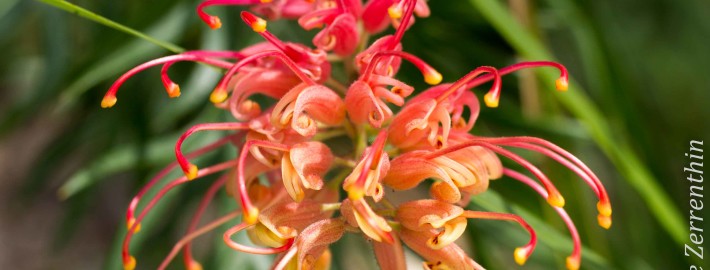

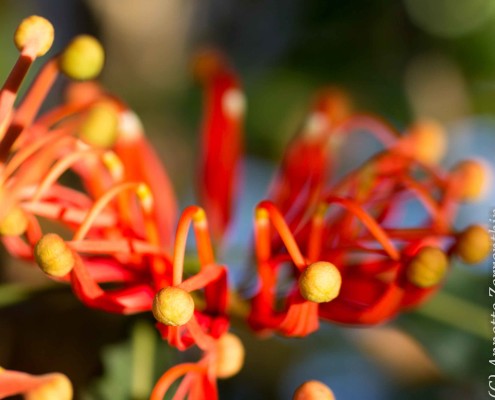
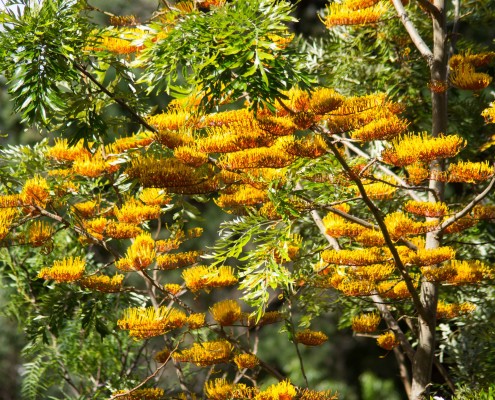
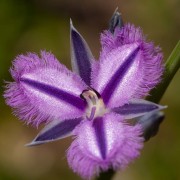
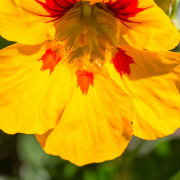
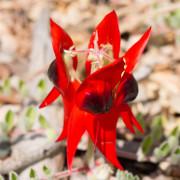
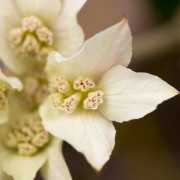
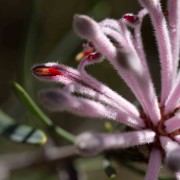

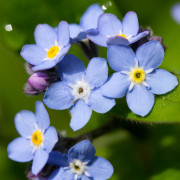
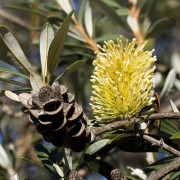

 Annette Zerrenthin
Annette Zerrenthin
Leave a Reply
Want to join the discussion?Feel free to contribute!